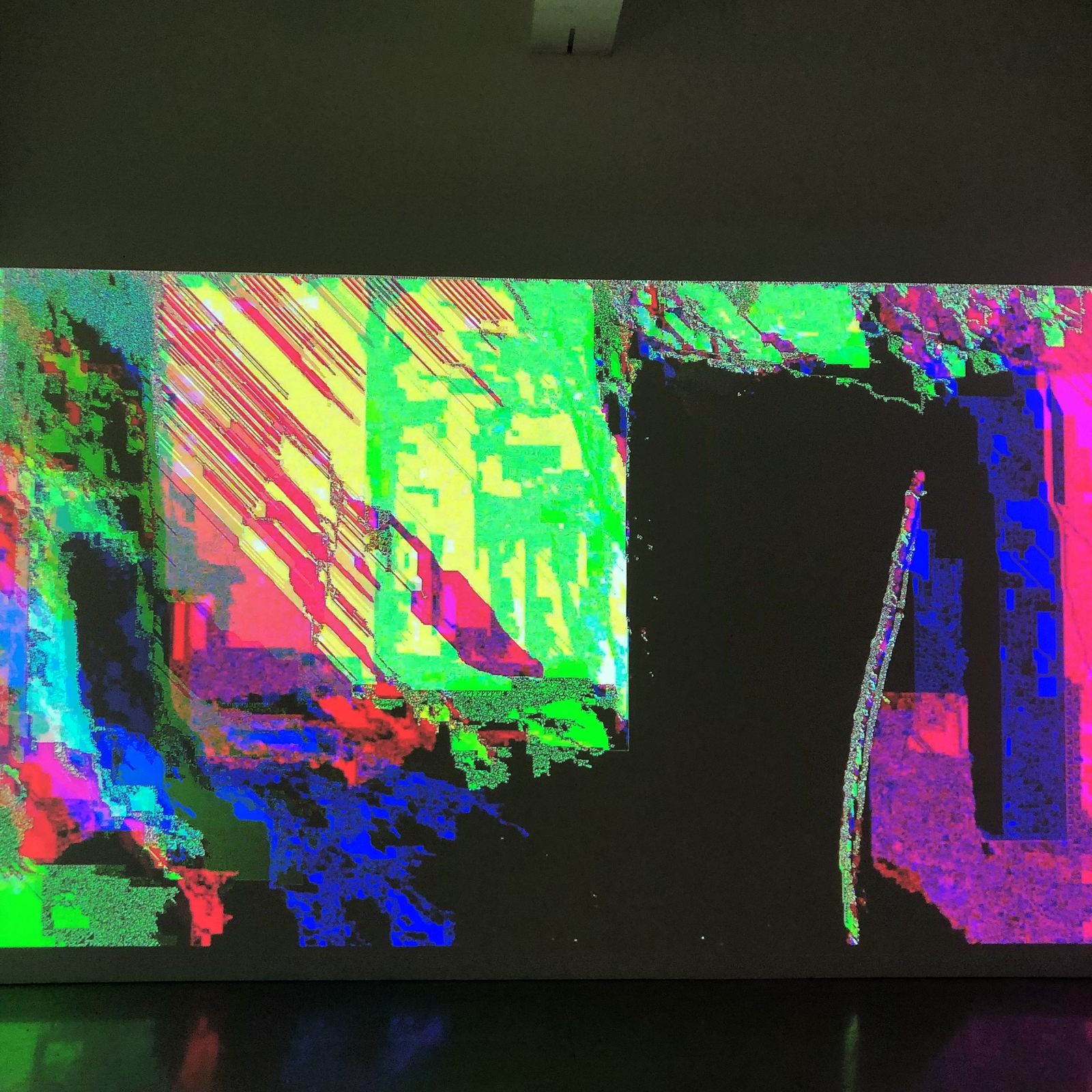DESMA’s Breaking the Rules Exhibit

Image by DESMA
Breaking the Rules challenged mainstream contemporary art as demonstrated by UCLA’s undergraduate student artists. The interactive exhibit, which appeared from January 17 to February 1, allowed the spectators to engage with the art for a more fun and whimsical approach. An overarching theme throughout the exhibit was its ability to connect technology and art, from a clay-animated video game to a snapchat code that included a bear familiar to Kanye’s famous Dropout Bear. Technology has become a standard medium in the new wave of art.
The design media art undergrads applied for the opportunity to be featured in the now student-run exhibit. The previous exhibits were managed and curated by the faculty until two students, Amy Fang and Chris Kim, decided to make the exhibit student driven. With over 80 applicants this year, the exhibit included about 50 pieces.
The exhibit started off with a familiar looking television set, one of those heavy duty box TVs that almost no one has anymore, but on the screen displayed an Asian man with a shaved head. On the ancient Sharp TV was Brian Pea’s The Homebody’s, an awkward twist to a sitcom show. Instead of your heteronormative family, guests were surprised with the 90’s style CGI background with the main (and only) character Brian disappearing and reappearing as different characters, doing a variety of tasks with a big grin. The testament to Brian’s uncomfortable sense of humor was seeing Brian kneel down with a chew toy in his mouth to represent the family’s dog.The feeling of familiarity can be recognized through the 90’s visuals and aesthetics, yet the cringeworthy comical style towards homebodies give the piece a modern take on art.
As you stepped further into the exhibit, you were drawn towards Karina Lopez’s Signaling Noise, LA. This video installation displayed a deformed Los Angeles as an artificial drowning noise captured your attention. Lopez’s work analyzed the impact sound has on space and how sound and visuals interact to initiate an unusual feeling. This art piece embodied the feeling of “zoning out” as the variances in sound frequencies seem to fade into the background. The multiple shots of the industrial city were distorted to the point where the video felt like it was being played on a broken TV. I rarely feel disoriented, but the transcendent sound allowed me to stop thinking. It was an unnatural bliss that I only feel when completely surrounded by the forest. Lopez’s video exposed people’s lack of acknowledgement of spatial sound and the impact sound has on visuals in order to complete an idea.
The next video installation consisted of a first person perspective walk through of a forest; the video consisted of limited yet bright colors. The walk would change rapidly to color bars traditionally seen on a broken or lost signal TV screen. The glitchy and pixelated visuals were accompanied with crunchy and static sounds which made the piece feel as if it were taken out of a horror movie. These pixels reminded me of a broken TV with uneasy white noise playing. This anxiety-driven piece took a twisted approach to the familiar.
The last installation featured a taboo activity that I wished I could do—spray paint. The artwork consisted of a projected backdrop of moving squares that was connected to two spray cans. People fought over the fake cans as many wanted their turn with this piece. They enjoyed seeing their silhouette as they sprayed virtual pink or blue squares. The simple activity of “spraying” random lines and letters brought pure bliss to me. My strange fascination of spray paint stems from my older brother practicing on our walls—he took pride in it even though his work was dismissed. By making the medium of spray painting digital, people are allowed to create and enjoy the art while facing no repercussions that usually comes with spray painting.
Throughout the exhibit, I couldn’t help but feel a warped sense of nostalgia—the constant practice of older mediums or concepts done a new manner left me in a paradox. I felt comfortable, yet excited to see the art works. I was beckoned back into my childhood by certain pieces. I started to attached my euphoric feelings to these pieces in order to reminisce. From Pea’s usage of 90’s aesthetic to usage of glitchy visuals, my previous experiences were called back. Many of us can relate to sitting around those boxy TVs to watch a not so funny sitcom or the feeling of terror from watching a horror movie as we all know those pixelated TVs and static sounds mean something bad is about to happen.
Maybe the artists’ purpose wasn’t to make the audience reminisce on prior memories, but they were successful in making their art visually profound. The usage of technology as a medium of art allowed for spectators to experience the same feeling but in a new setting. The exhibit gave a platform for our design media art students as each of the experimentations explored people’s comfortability and willingness to interact with art.




